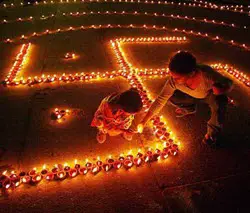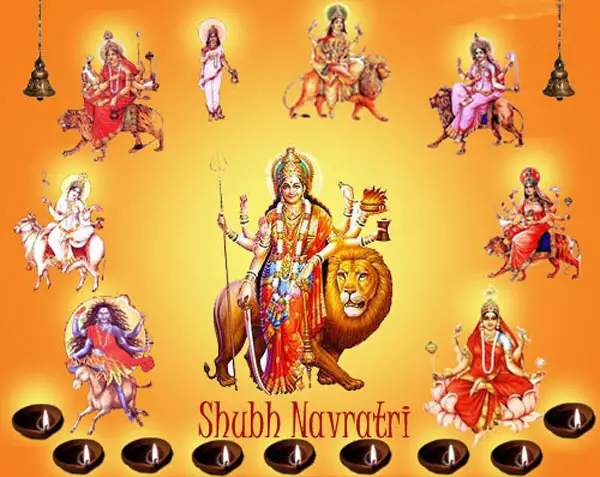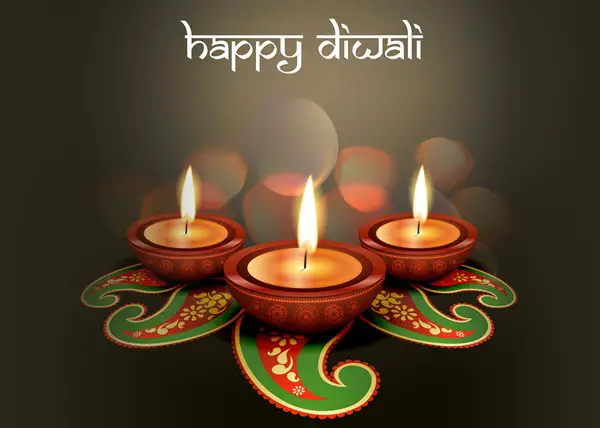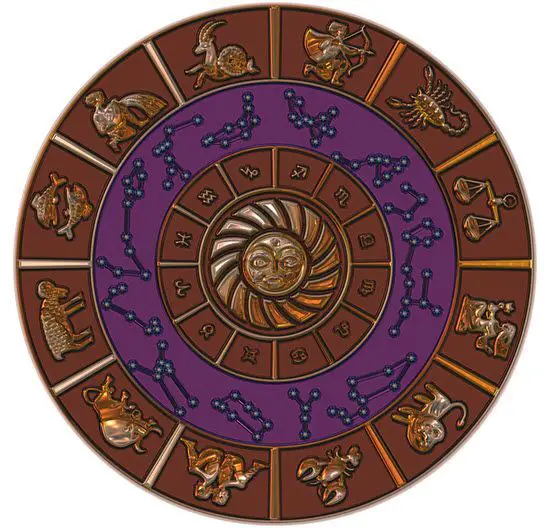Moksha is a term used in Hinduism which refers to liberation, enlightenment, and release.
It is a state where one gets complete freedom from Samsara, from the cycle of death and rebirth. It also refers to a state where one gets liberation from ignorance.
The person who achieves Moksha attains self-realization, self-actualization, and self-knowledge.
We have taken up the subject in this post – what is Moksha and how to achieve Moksha. Let’s get started.
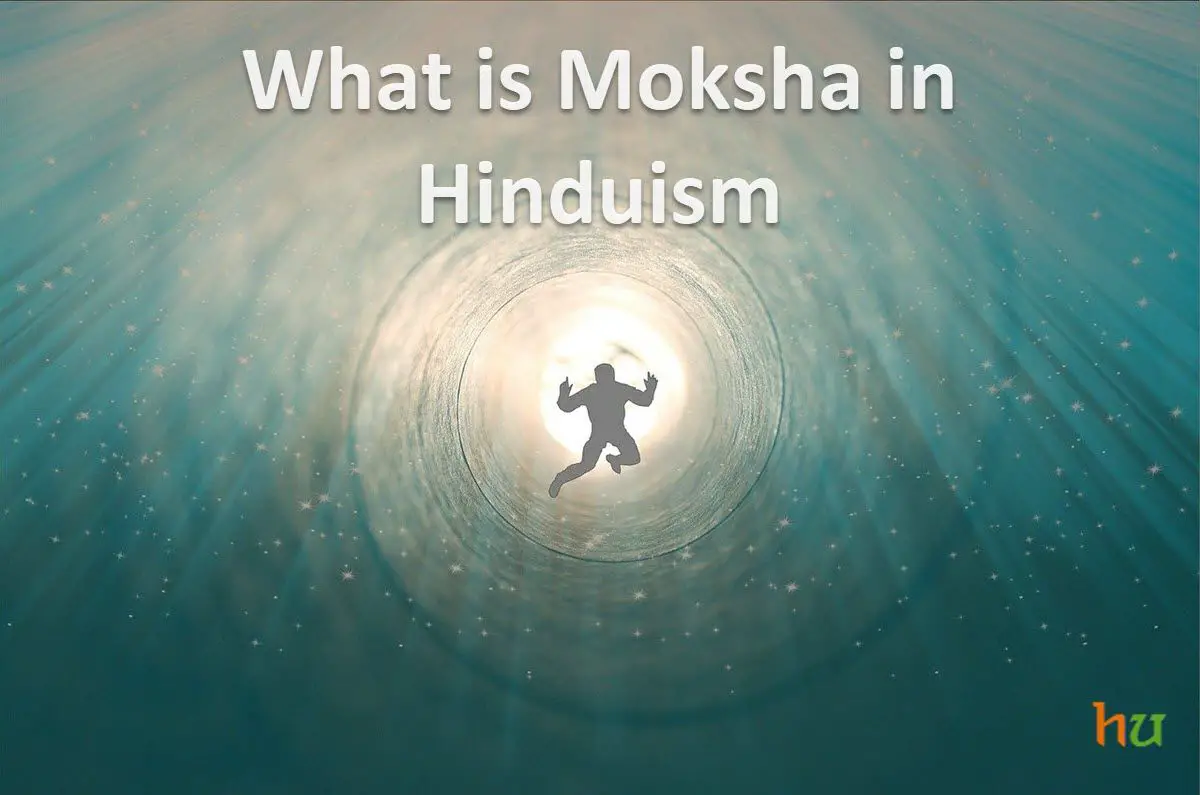
Table of Contents
What is Moksha in Hinduism?
Moksha is one of the most central concepts in Hinduism. In fact, Moksha is the highest aim of human life. The other purposes of human life are:
- Dharma: virtuous and moral life
- Artha: Income security, means of livelihood, and material prosperity
- Kama: emotional fulfillment, pleasure, and sensuality
Together these four paths of human life: Dharma, Artha, Kama, and Moksha, are called Purusharth in Hinduism.
The concept of Moksha is also known as:
- Vimoksha
- Vimukti
- Mukti
- Nirvana
It should be noted that the term “nirvana” is often used in Buddhism, while “moksha” is more prevalent in Hinduism.
Moksha is formed from the root, “Mukt,” which means to become free, let go, release, and liberate.
Essentially, Moksha can be understood as freedom from the cycle of birth and death. A person has to be born again and again until he/she achieves Moksha.
In the state of Moksha, a person experiences oneness with Brahman, the Supreme Self or God. It is a state of knowledge, peace, and bliss.
A person who achieves Moksha becomes free from sorrow and suffering. Moreover, a person achieves a state of perfection in Moksha.
In the concept of Moksha, one realizes the Self and becomes one with the Universal Consciousness or God.
In fact, the only way to experience bliss and unite with the Divine is to attain the state of Moksha.
Hindus believe that a person has to take birth again and again until he/she achieves Moksha that is the ultimate freedom. Moksha marks the end of the cycle of Samsara, that is, birth and death.
Hindus believe that a person has to pass through the three states of Purusharth (Dharma, Artha, and the Kama) until they can free themselves from worldly possessions and desires.
In Srimad Bhagavad Gita, Lord Krishna says that a person (yogi) who practices Nishkam Karma can attain Moksha.
Patanjali Yoga Sutras has mentioned the steps (paths) of achieving Moksha, such as Jnana, Bhakti, Karma, and Raja. Many yogis and Gurus have preached that one should practice meditation as a means of self-realization and liberation.
The concept of Moksha came into being because humans are in search of permanent happiness. It is only permanent happiness that can liberate you from the clutches of sorrow and miseries.
Moksha can only be achieved when one becomes aware of the Self. Moksha is the ultimate goal of human life. Hindus believe that Jiva (Atma) is in bondage or in the clutches of Maya (Kama, Krodha, Moha, Lobha, etc.). It is only through ultimate realization that one can become free from worldly attachments.
Key Points:
- Hindus believe that Moksha is the highest goal of human life
- Moksha means freedom from the bondage of Samsara
- In the state of Moksha, a person becomes one with the God
- Moksha brings union with God in two ways: Unity of purpose and complete union of identity
In Bhagavad Gita, Lord Krishna says that a person who is not disturbed by happiness or distress is certainly eligible for liberation (2.15)
You may also like: Gajendra Moksha Stotra
What Happens After Moksha?
When a soul attains Moksha, it loses its outer gender-linked body by bathing in a divine “Viraja” (River) that flows around the liberated world. It attains a heavenly body and enters and lives in the liberated world known as Vaikuntha.
It should be noted that the soul does not go to Heaven (permanently) after attaining Moksha. Heaven is a temporary world that rewards the soul for its good deeds based on its stockpile merits of good deeds. So, the good deeds all get used up in Heaven.
Moreover, a liberated soul after attaining Moksha is said to reside in Brahma Loka, i.e., the seventh Heaven. The liberated soul travels to the Brahma Loka in a special craft – Vimana.
Here, we give you the details of the Liberated World or the Moksha Loka.
The Moksha Loka has situated about 26,200,000 yojanas (209,600,000 miles) above Satyaloka (the uppermost layer of Heaven). It is three times larger than the seemingly infinite visible world that has millions of galaxies.
It should be noted that the Moksha Loka never gets destroyed. It has always been there. In the Moksha Loka, no Sun is needed to illuminate things. Things are self-luminous there.
Moreover, in the Moksha Loka, no shadow is cast, and there is absolutely no darkness there. Everyone lives in a house made of Chintamani (It is a miraculous stone capable of giving everything one thinks).
The souls turn into supermen/superwomen and enjoy flying. They can change physical forms as well.
We need to point out that a liberated soul (after attaining Moksha) lives in the state of absolute bliss while being the knower and seer of the whole Universe.
In the state of Moksha, one realizes that He is neither the body nor the name but an absolute pure soul. It resides in the Siddha Kshetra.
How to Achieve Moksha?
The Hindu Shastras mention two paths of achieving Moksha. These are as follows:
- Karmic Path: It is a traditional step-by-step path.
- Akram Path: It is a Stepless path.
Here, we give you the details of these two paths.
- In the Karmic Path, one needs to renounce the family life and material possessions. It requires you to remove your inner weaknesses.
You need to practice self-control and dissolve the ego to attain the state of “Samadhi” (absolute bliss). It is a step-by-step path to Moksha.
However, as far as the present era is concerned (Kaliyuga), there is no unity of thoughts, speech, and action. So, it is a challenging path to attain Moksha in Kaliyuga.
- Akram Path is a very rare path that comes once in a million years. There is a story in Hindu mythology of Emperor Bharat (the son of Lord Rushabdeva). He attained Moksha by following the Akram path; it is an elevator path, it is achieved by following Akram Gnan.
It is Stepless path to Self-realization. It helps you to lead a life of harmony and happiness and allows you to achieve Moksha. However, it depends on one’s karmic account from the past life. It is a path of Gnan that can liberate you in just one lifetime. It requires surrendering or sharanagati. It blesses you forever.
Well, that’s all we have to share with you in this post on Moksha in Hinduism. We believe that the post proves helpful to you and enlightens you on this subject. Thanks for visiting us at HindUtsav. Lastly, we say to you to please share the post across popular social networking channels.

